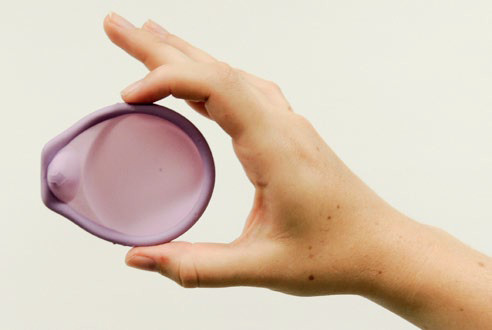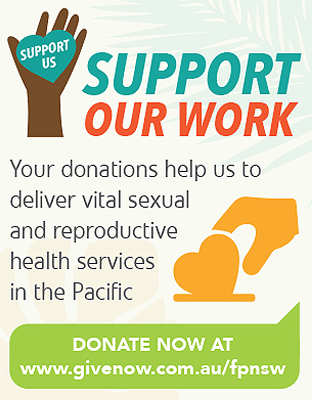Contraceptive Diaphragm
What is a diaphragm?
A diaphragm is a barrier method of contraception for women.
It's a shallow dome of silicone with a firm and flexible rim.

A diaphragm is placed in your vagina like a tampon so that it covers the cervix (entrance to the uterus) and tucks in behind the pubic bone to stop sperm from entering. It's held in position by the pelvic muscles.
What diaphragms are available in Australia?
There is only one type of diaphragm available in Australia. It is a single size diaphragm, called Caya, which is designed to fit most women. It is generally recommended that you are examined by a doctor or nurse to check your insertion technique and that the diaphragm fits properly over your cervix.
How does the diaphragm work?
A diaphragm stops sperm getting into the uterus during sexual intercourse. Sperm can live for several hours in the vagina so the diaphragm must be left in place for at least 6 hours after sex until the sperm in the vagina die. The manufacturer recommends also using Caya gel, a lactic acidbased gel that is used on the inside of the diaphragm next to the cervix.
How well does the diaphragm work?
Diaphragms are not as effective as some other methods of contraception including the pill, implant and intrauterine devices (IUDs). The diaphragm is 86% effective in perfect use, and 82% effective in real life or "typical" use. The diaphragm is not suitable for all women. Your clinician will help you work out if it's the right contraceptive method for you.
| Advantages | Disadvantages |
|---|---|
|
|
Where can I get a diaphragm?
You can buy the diaphragm from Family Planning NSW clinics and some pharmacies. You can also buy it online.
How do I use the diaphragm?
Your doctor or nurse can help to make sure the diaphragm fits you and can check that you know how to put it in correctly. The manufacturer provides detailed instructions in the box and on their website about how to use the diaphragm. It is a good idea to practise inserting and removing the diaphragm several times before you use it for contraception.
To insert the diaphragm:
- apply lubricant gel to the upper surface
- use the dimple grips to squeeze the rim together
- insert the diaphragm into the vagina and guide it back and up towards the small of the back as far as it will go
- tuck the diaphragm behind the pelvic bone at the front of the vagina
- check that the cervix is completely covered by feeling with your fingers
To remove the diaphragm:
- leave the diaphragm in place for at least 6 hours after sex
- hook your index finger into the dome to pull the diaphragm out
- wash the diaphragm & put away in its case
How do I look after my diaphragm?
- A diaphragm should last for up to 2 years if you care for it properly
- After use:
- wash the diaphragm with warm water and plain unperfumed soap
- rinse and leave it to air dry thoroughly
- put it away in its case in a cool place
- Check it for any holes or signs of wear
- if it feels sticky, the silicone is perishing
- Don’t wash it with disinfectants, detergents, powders or perfumed soaps
- Check with a pharmacist when you use any vaginal products to make sure it can be used safely with your diaphragm
What do I do if the diaphragm moves during sex?
If the diaphragm moves out of place, tears, or is not used properly then you should think about using emergency contraception.
The emergency contraceptive pill is available from a pharmacy without a prescription and should be taken soon as possible after unprotected sexual intercourse. See our emergency contraception factsheet for more information.
For more information
Caya website – www.caya.eu
Family Planning NSW Talkline – www.fpnsw.org.au/talkline or 1300 658 886
National Relay Service (for deaf people) – 13 36 77
TIS National's interpreting service – 131 450
Visit your nearest Family Planning NSW clinic – www.fpnsw.org.au/clinics
Family Planning NSW client resource on contraception – What suits me?


